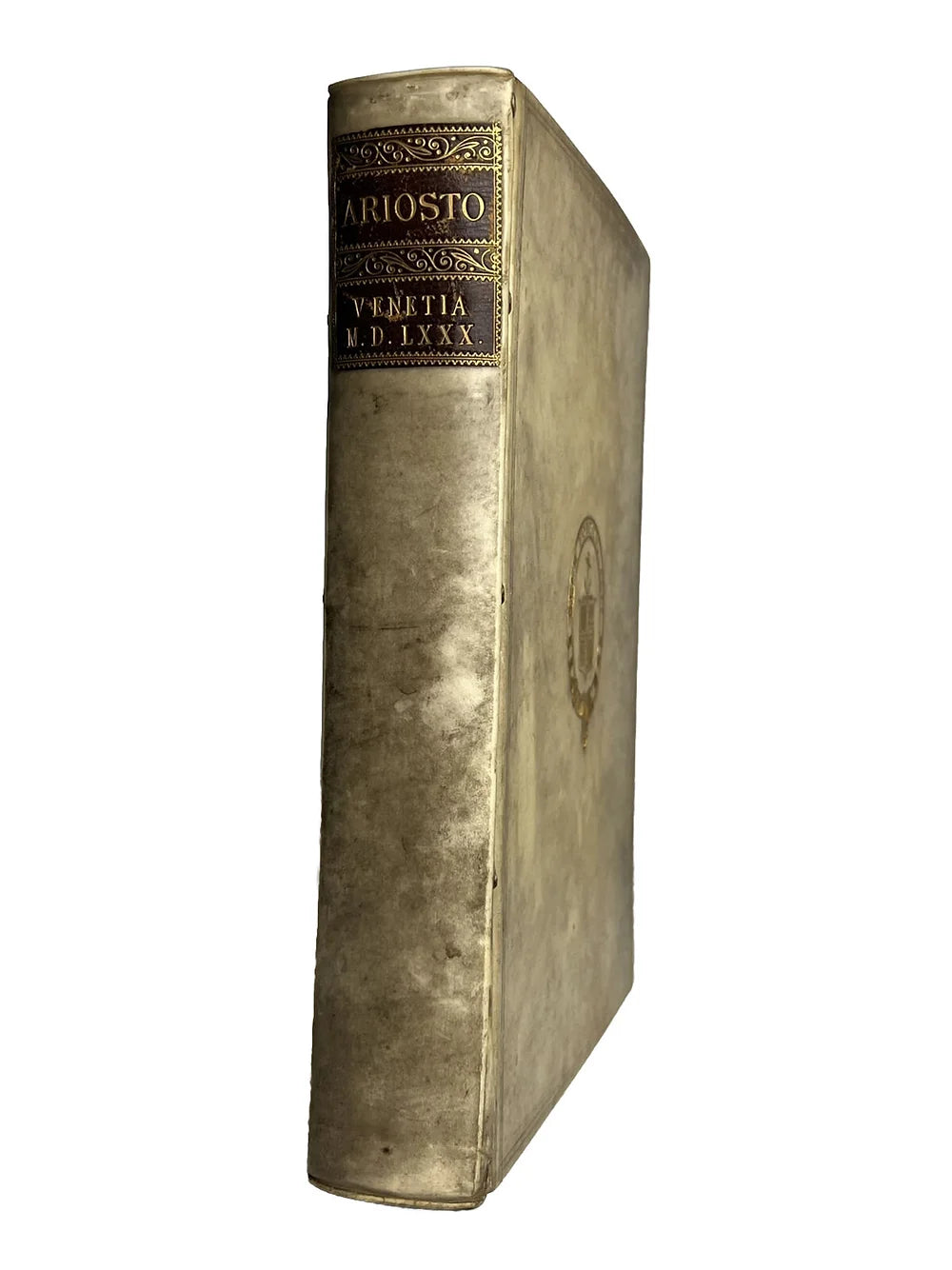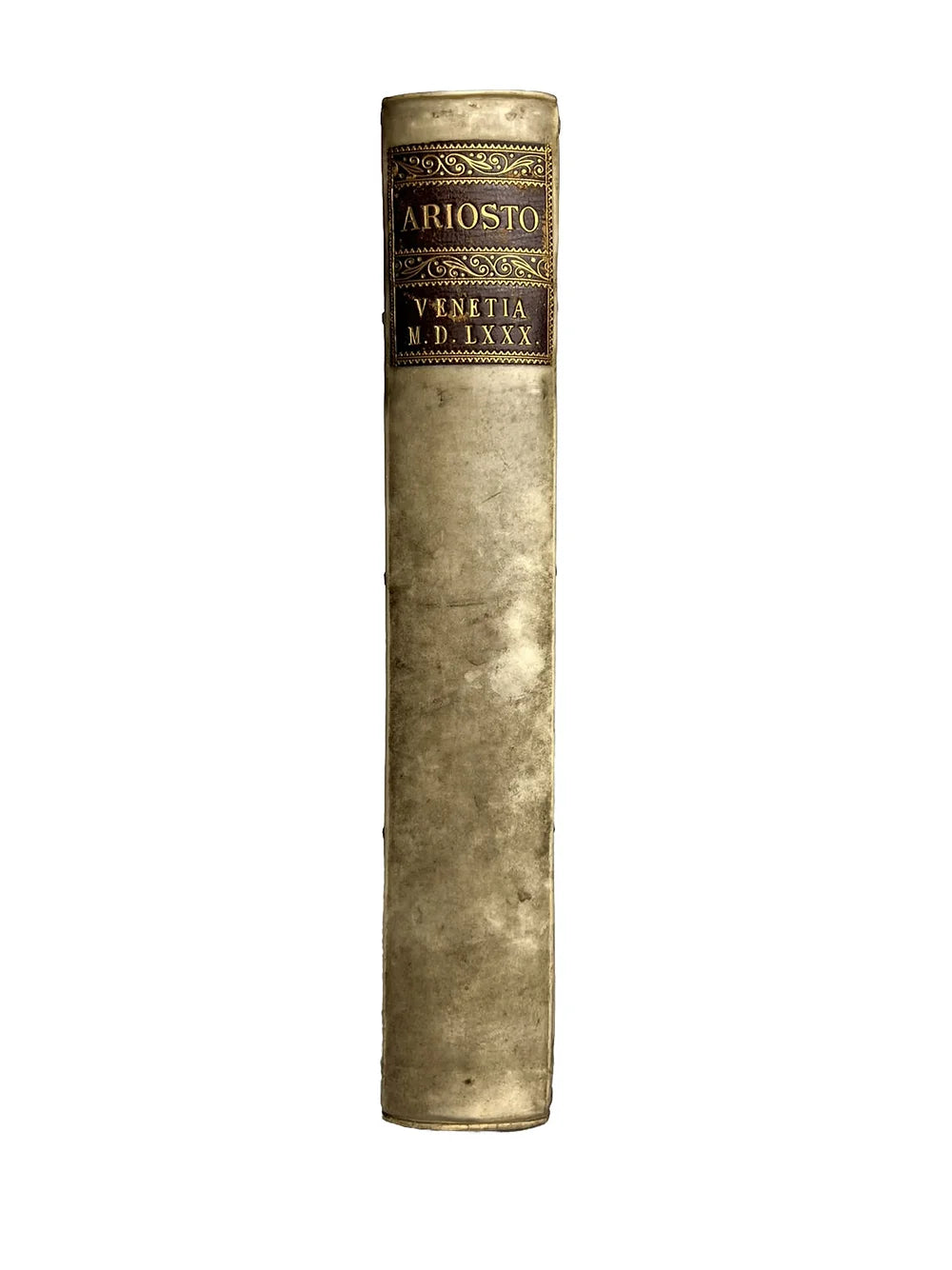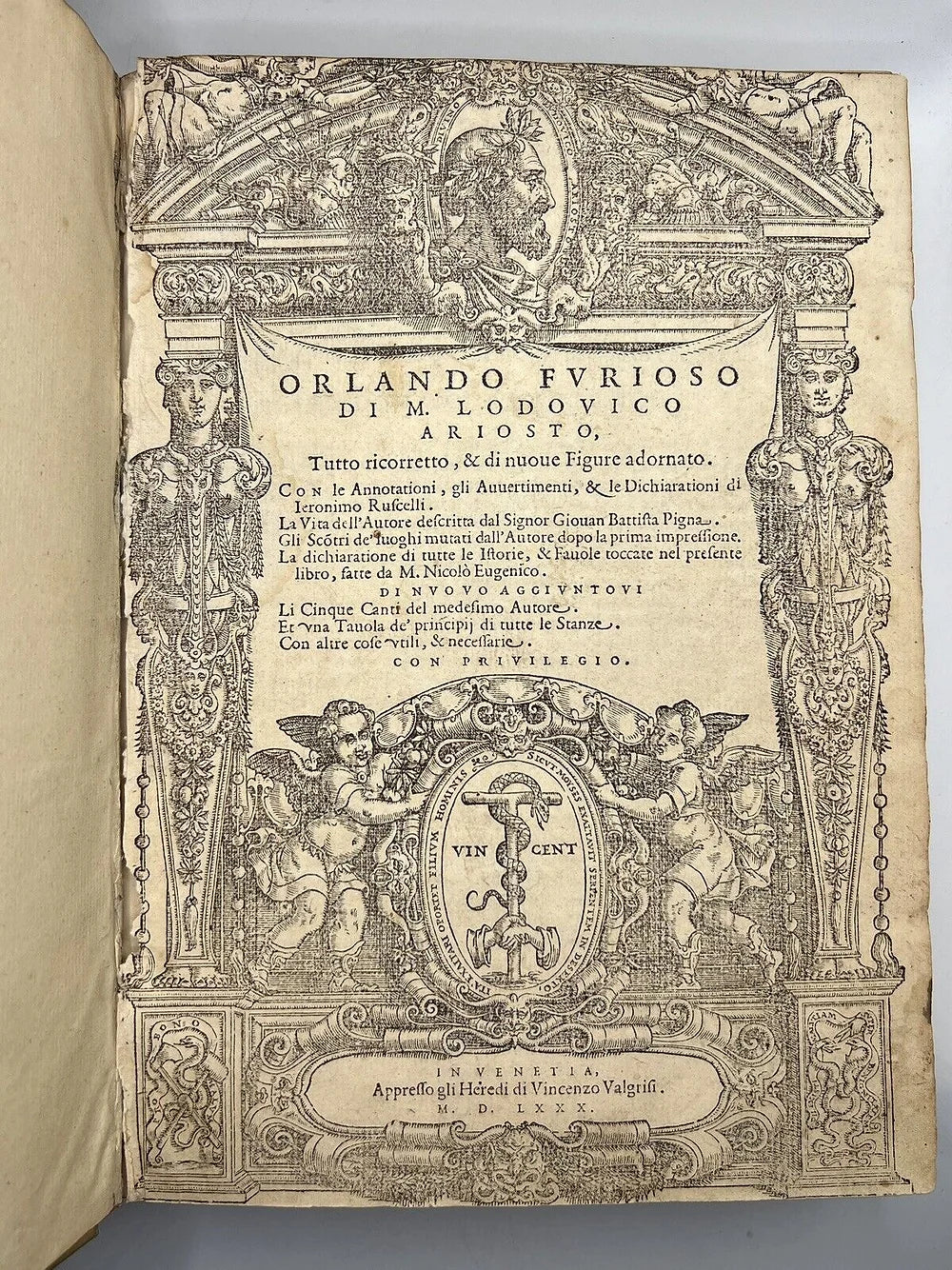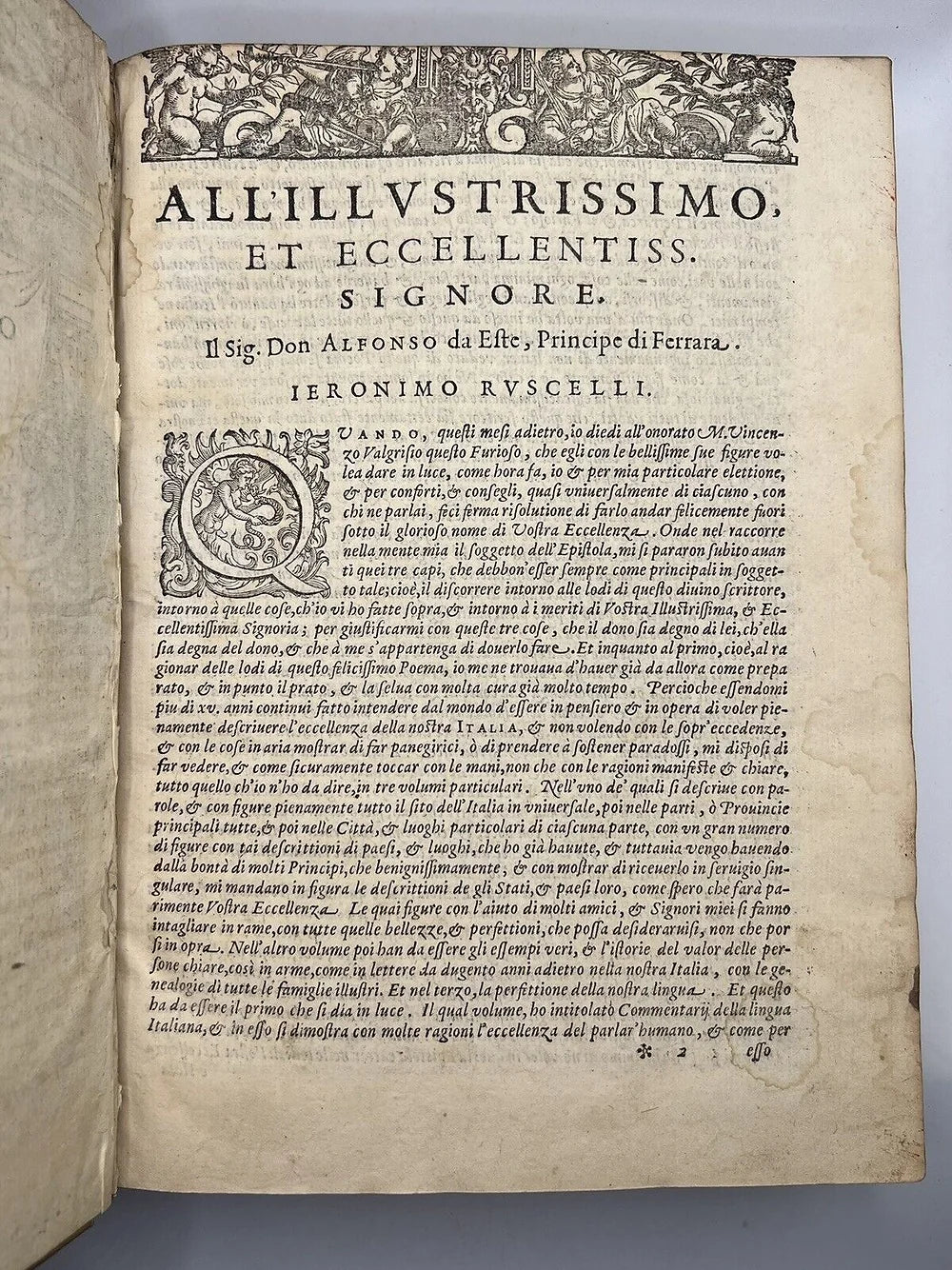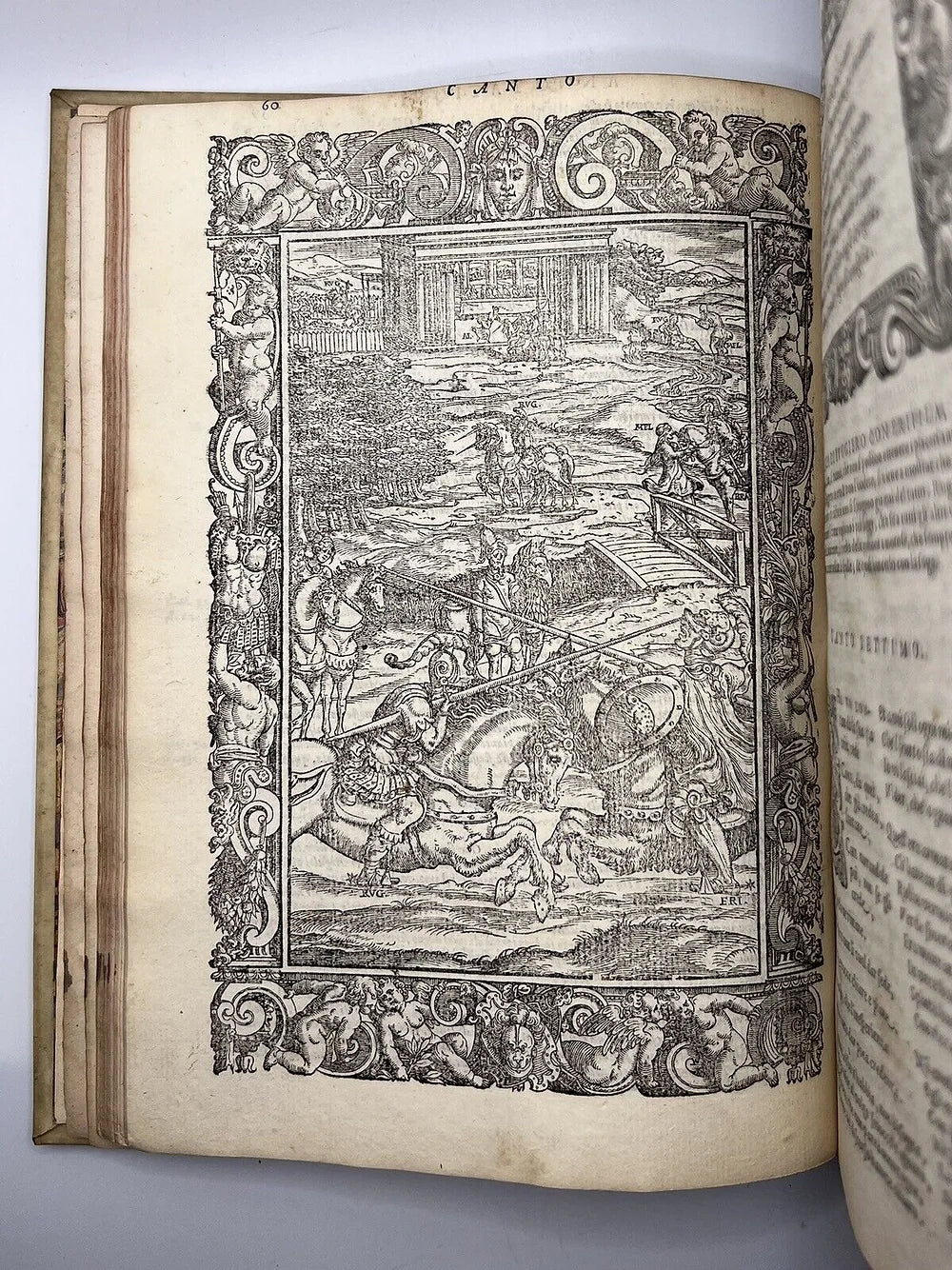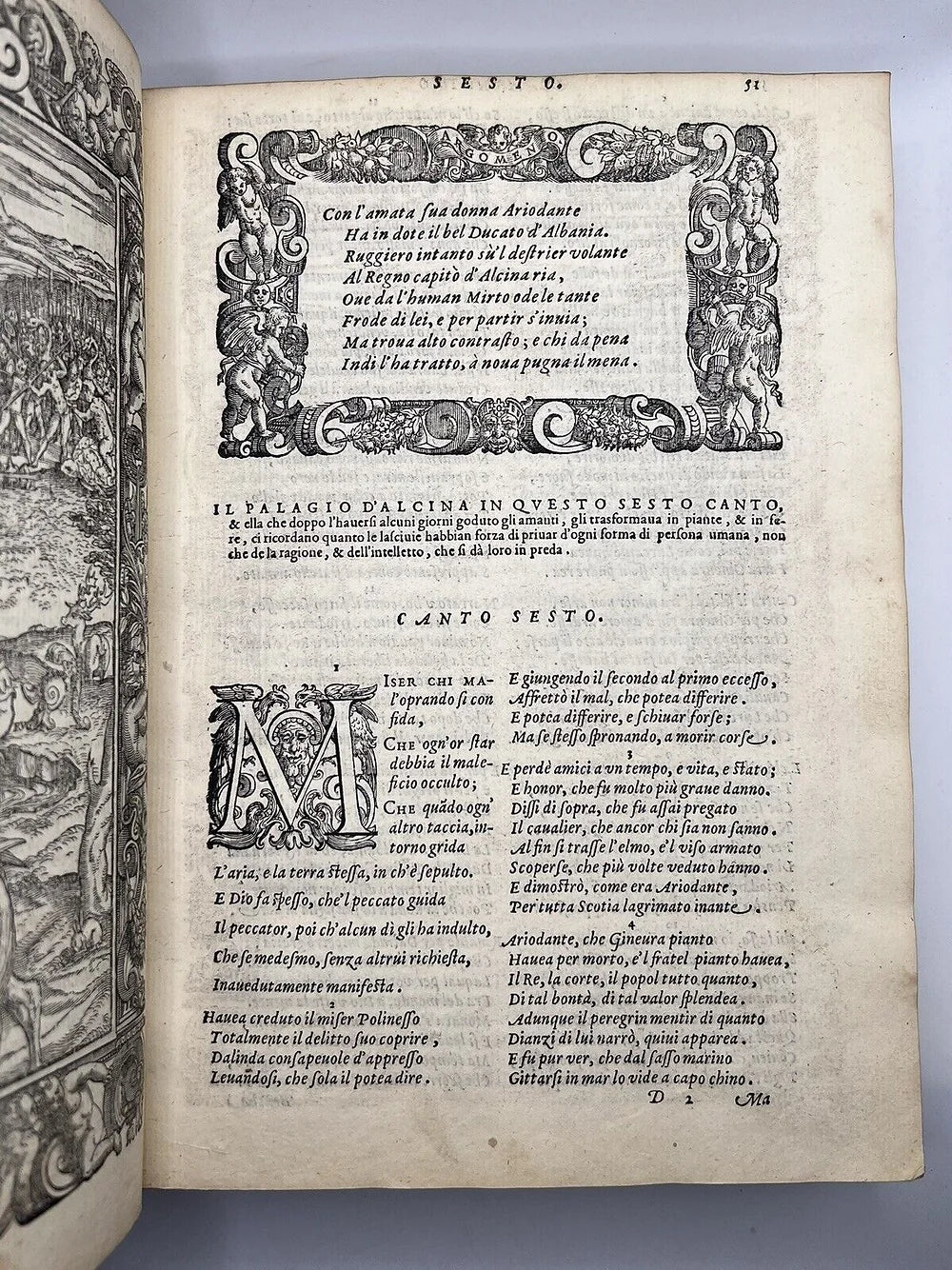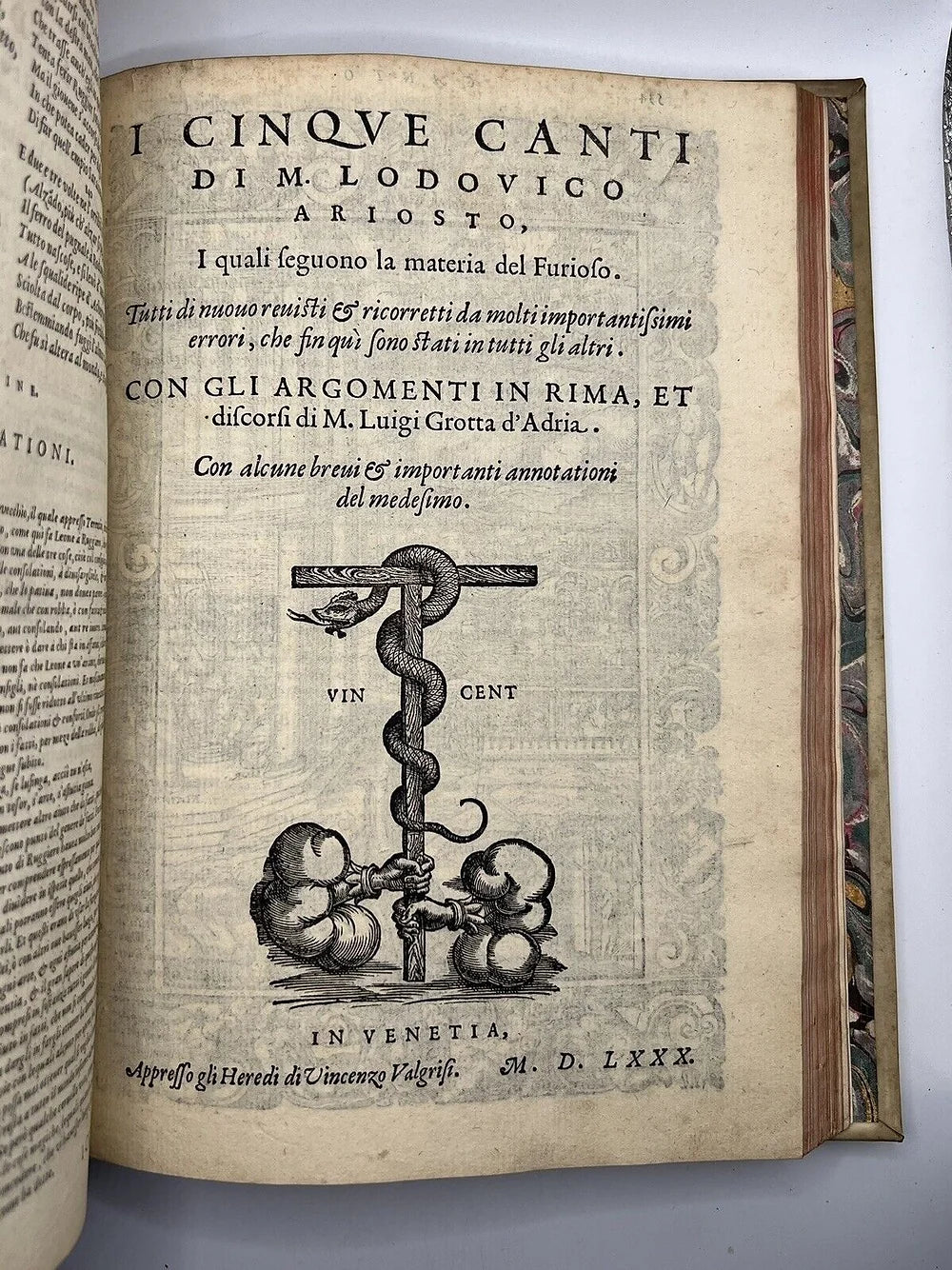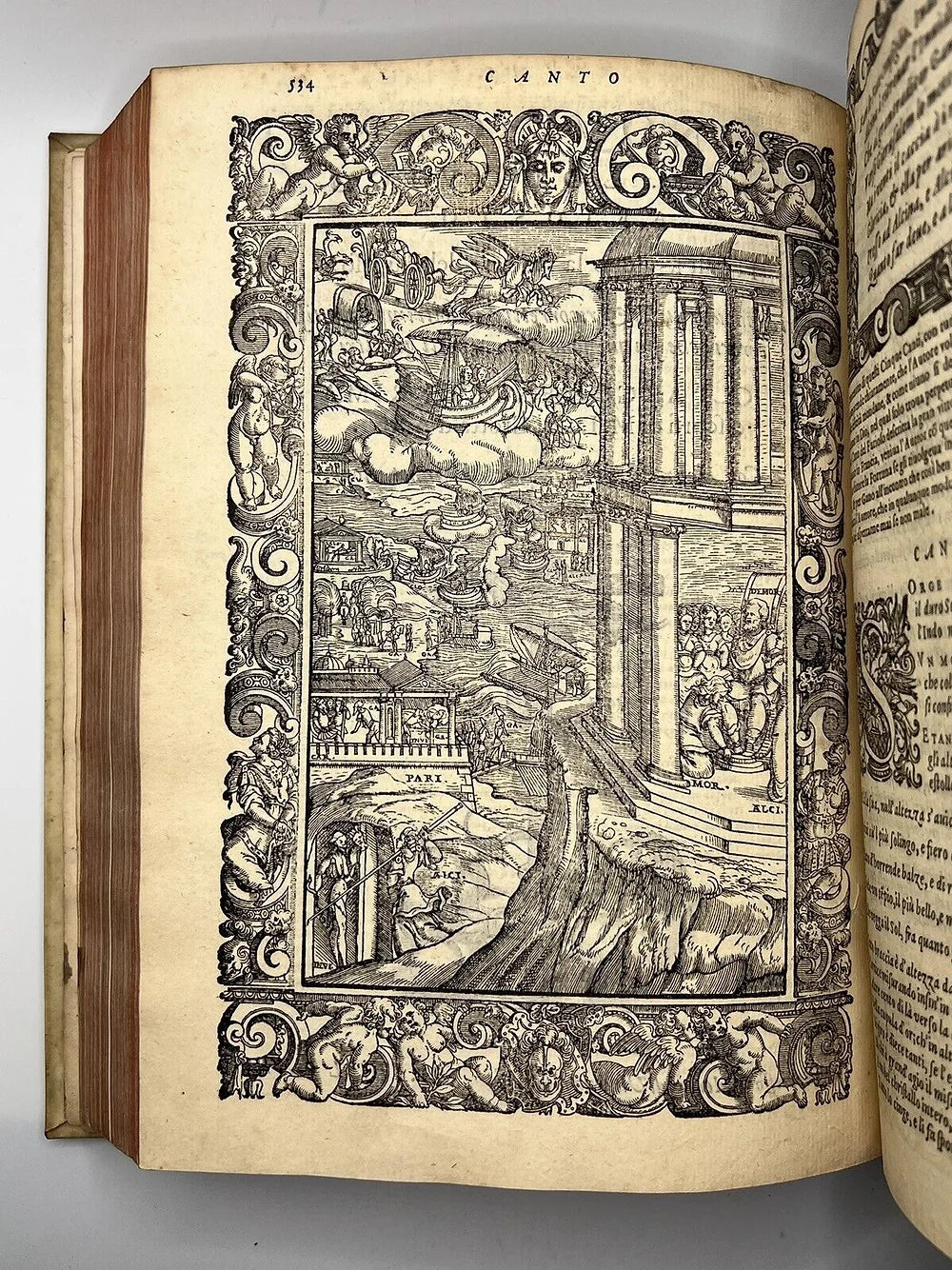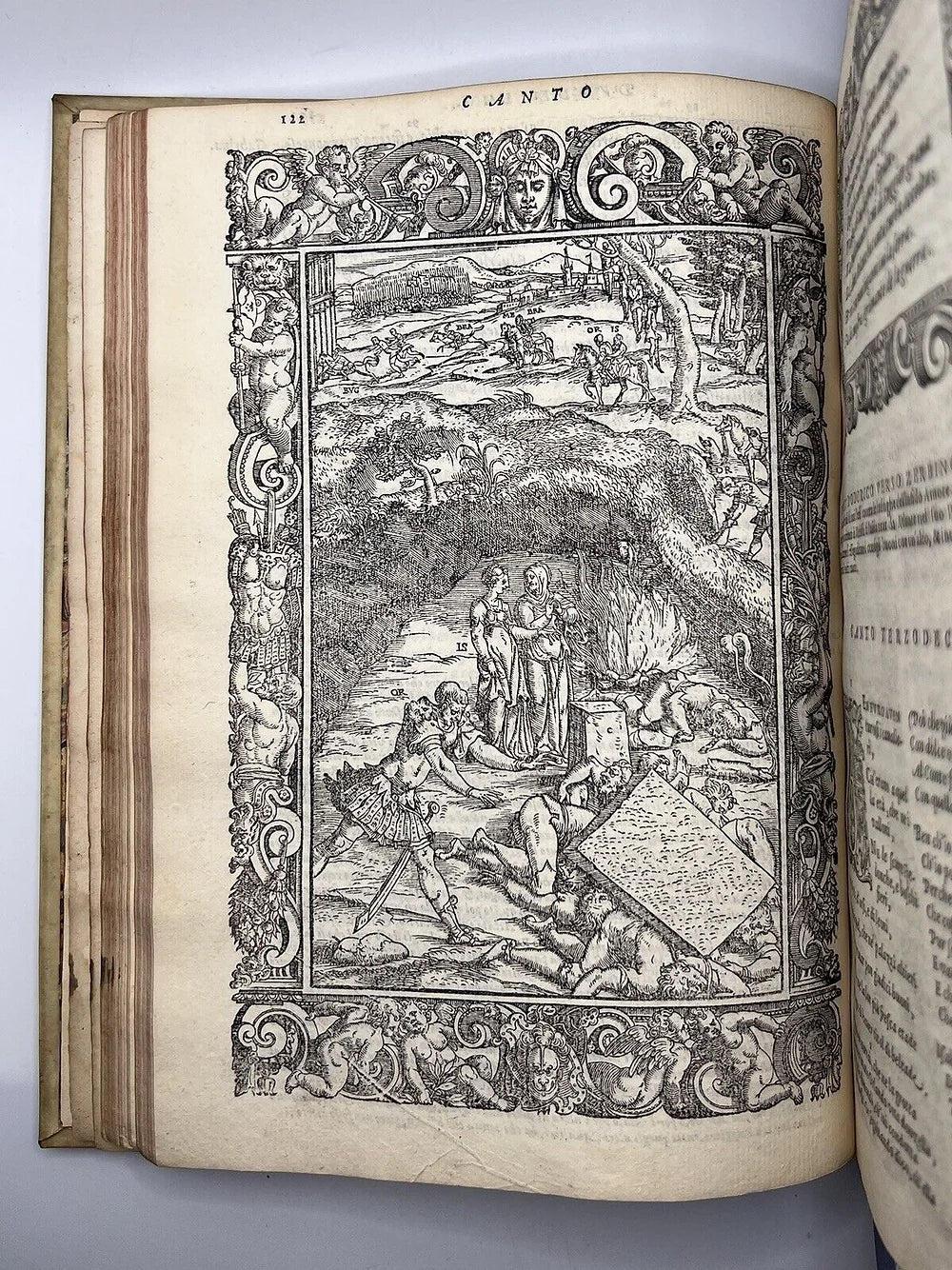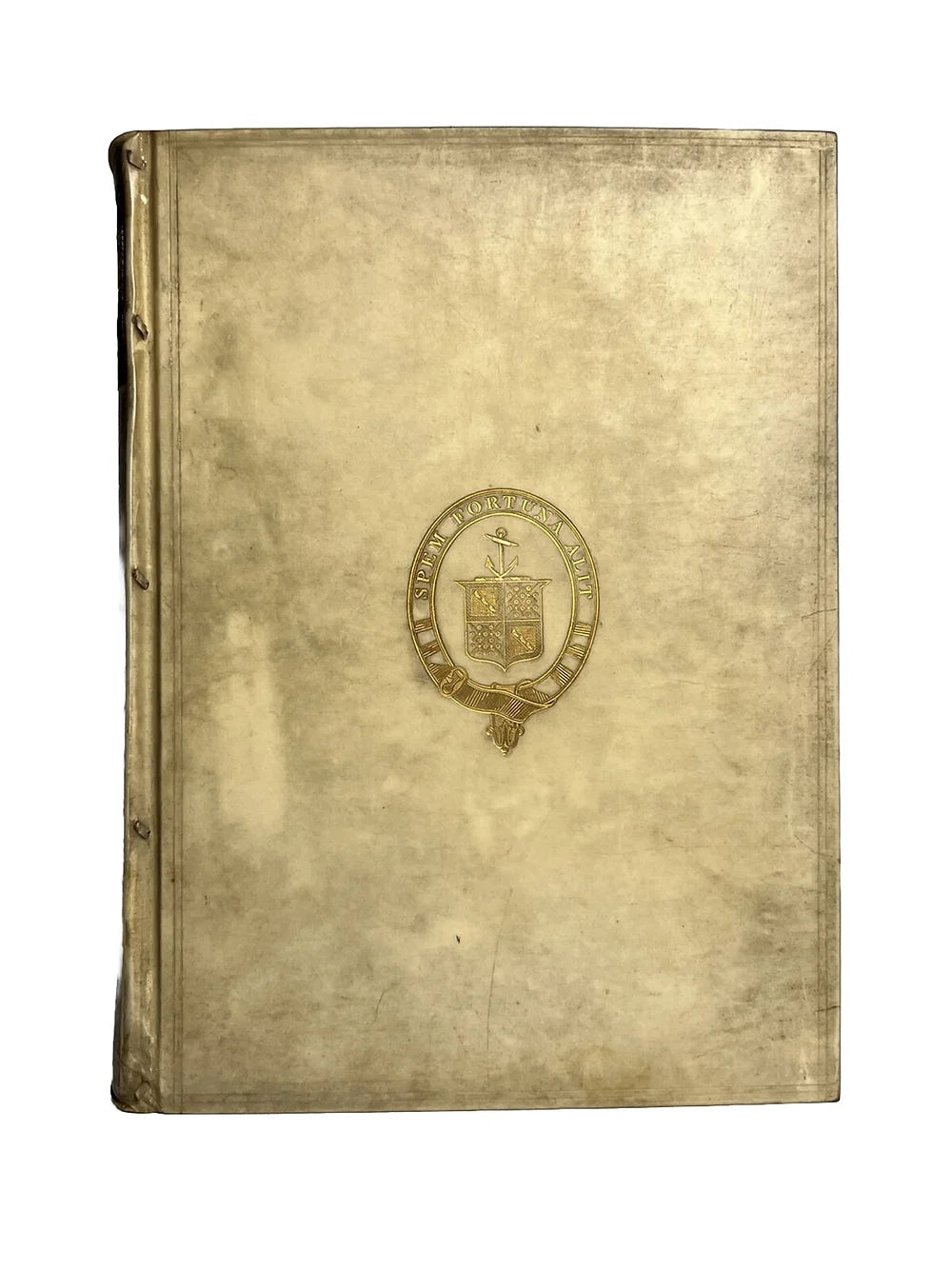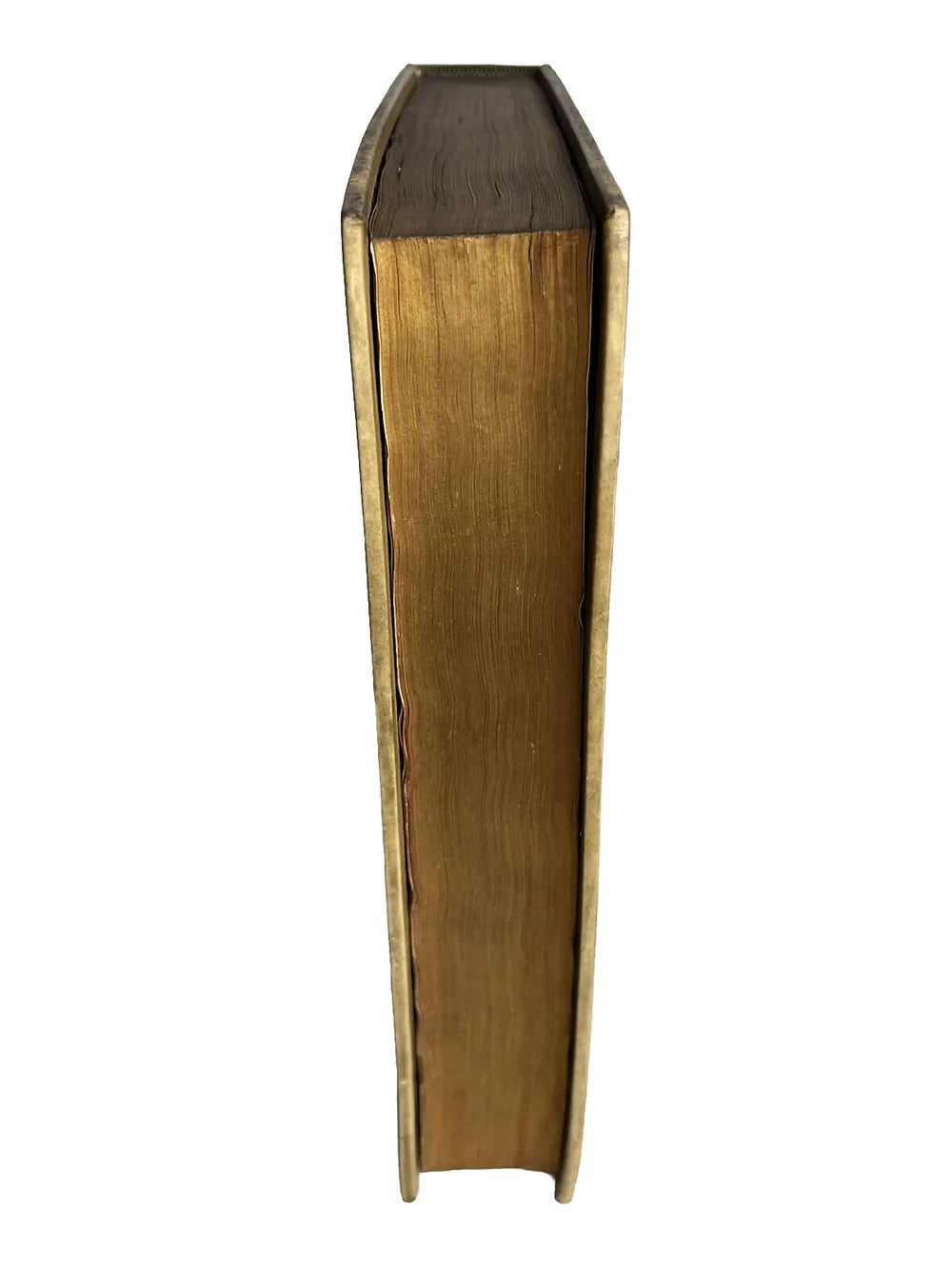1
/
of
11
Orlando Furioso by Ludovico Ariosto 1580
Orlando Furioso by Ludovico Ariosto 1580
Regular price
Sale price
£1,600.00 GBP
Unit price
/
per
Tax included.
Shipping calculated at checkout.
Couldn't load pickup availability
Orlando Furioso by Ludovico Ariosto
Published in Venice by the Heirs of Vincenzo Valgrisi in 1580.
[i-xvi], [1-654], [i-xxxii]
"A gem in the history of book illustration"
[Brunet I, 436]
-------------------
Orlando Furioso by Ludovico Ariosto, first published in 1516, is an epic poem that blends elements of chivalry, romance, and fantasy. The poem is set against the backdrop of the conflicts between Charlemagne's Christian forces and the Saracen army during the Middle Ages. It narrates a sprawling tale of love, heroism, and magic as it follows the adventures of various knights and characters, primarily focusing on the erratic and passionate deeds of the paladin Orlando.
At its core, the poem revolves around the love Orlando bears for Angelica, a beautiful princess, and his subsequent descent into madness when his love remains unrequited. The narrative weaves together various subplots and characters, including Ruggiero, a Saracen knight who falls in love with Bradamante, a Christian warrior maiden; and Astolfo, another paladin who embarks on a journey to recover Orlando's lost wits from the moon. The narrative also delves into the magical realm, where enchanters, sorcerers, and mythical creatures play integral roles in shaping the events.
Ariosto's work is renowned for its intricate and imaginative storytelling, filled with battles, quests, and supernatural elements. The poem explores themes of honour, chivalry, and the complexities of human emotions, often with a touch of satire and humour, also reflected in the illustrations of this edition which often feature humour. The poem's influence can be seen in subsequent works of literature, including those by Shakespeare and Cervantes, and it remains a significant example of Italian Renaissance literature.
The very rare and famous reprint of the inferior 1556 edition, this 1580 print being the first to print full page woodcuts, referred to by Brunet as the 'Edition recherchee' [most desired edition]. Quite honestly, this is the most beautifully illustrated book we have come across of this type. The only book which can compete in the quality of its illustrations which we have encountered is the 1554 Mattioli Commentarii we have for sale, though those are of a different nature. The typography present in this edition is simply fantastic.
The illustrator for this book is often presumed to have been Dosso Dossi, though many doubt this attribution. The very large plates which illustrate the beginning of each canto are very complex in their detail as one can see in the various photos. Quite rarely for this period, several of these illustrations depict the topography and cartography of various places with real maps and even a view of Paris. Benassi-Pezzini in his bibliographical work on maps is quoted as saying "by placing the adventures of errant knights on a map, or by juxtaposing a cartographic background with the perspective representation of imaginary places, these illustrations faithfully translate into images the mixture of romanticism and reality, as represented by the maps".
-------------------
Size: 250 x 185 mm (approx.)
[Brunet I 436; EDIT 16 CNCE 2796]
Condition:
Externally very good, internally near fine.
Collated as complete in 16pp+654pp+32pp, including the second title page on pp.533 commonly lacking and with the 51 illustrations throughout.
A very attractive book bound in full vellum, probably 19th century with the tooled label potentially being earlier. Spine with some discolouration and dulling, uniformly so and thus presents well on the shelf - particularly with the very attractive tooled morocco label with intricate gilt. Boards with some less significant discolouration and generally presenting very well without significant issues. Gilt design to both boards show very well and are without loss, written with the motto "spem fortuna alit". This armorial design is the arms of John Gardinier Kinnear (1794-1865), a Scottish financier with a well established and very respectable book collection which included some very expensive books. With both boards securely attached without damage to the joints. All page edges gilt with top edge slightly dulled but generally remaining very good.
Bookplate to front pastedown of Caroli Sarolea with the rather nice motto "in angello cum libello". The main title page is working loose in the gutter but present, else all other leaves are securely bound into the binding. The text block has been trimmed at the head occasionally catching the tops of some letters of titles/numbering but without loss to legibility of any text. The text block is exceptionally clean, without any foxing. Some extremely light dampstaining to a few leaves, though this is very light and difficult to notice. Small stains to pp.349-351.
A beautiful copy of this scarce and beautifully illustrated work.
